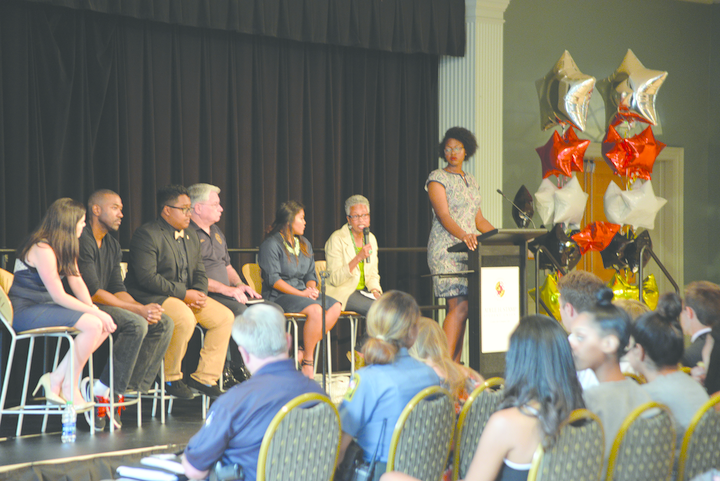This past Wednesday, I attended a rather eye-opening panel that discussed the relationship between University of Maryland Police and the students at the University of Maryland — specifically students of color. The members on the panel included students involved in the various organizations hosting the event, African American studies professor Jason Nichols, the Chief Diversity Officer Kumea Shorter-Gooden and UMPD Police Chief David Mitchell. The event was put together by the this university’s chapter of the NAACP, the Phi Beta Sigma Fraternity and the Student Government Association. This alliance alone shows significant steps are being taken to reduce misunderstandings between the various communities coexisting on our campus.
Christine Hagan, the SGA director of sustainability, started the panel off asking the panel pre-selected questions. These questions touched on a variety of aspects involving the policing made on campus and race relations in general. The question that stuck out the most to me was whether the United States — and this campus — are divided by race. The answers that followed showed a bit of a spectrum on perceptions of campus interactions. SGA President Katherine Swanson said “we’re not 100 percent divided as students,” and former SGA Diversity and Inclusion Director Johanna DeGuzman said, “there has been progress” concerning division on campus. However, Trey Huff, the NAACP director of membership and outreach, said with confidence, “the campus is divided.” He then went on to offer a solution to this problem that involves students taking initiative themselves rather than hiding behind the mask of an organization in order to begin bridging the gap between people of different backgrounds.
Later, Nichols said, “we were never a united nation,” and that most police officers nowadays refuse to acknowledge the similarities between modern policing and slave patrol. Mitchell, one of the panelists, is one of the few officers who openly recognizes this and had no problem talking about its problematic aspects.
The divergent responses to this question clarified ideas that I had been unsure about previously. When people do not actively participate in a certain community, they tend to have misconceptions about various things that affect those within said community. Although the SGA student representatives were well-versed in the discussion about diversity, their responses to racial division made them seem a bit uninformed. From the perspective of someone involved with the promotion of diversity and inclusiveness, it makes sense that the SGA would want to portray the idea that the campus is well-connected. However, this may not be the same perception for students who don’t necessarily attend events promoted by such organizations.
Imagine walking into the lounge on your dorm’s floor to heat up some food and being met with awkward stares and a sudden end to whatever conversation was occurring before you entered the room. Now, imagine you’re one of the very few black or non-white people on your floor, and the people in the lounge are all white students. This thought most likely makes you uncomfortable. It made me uncomfortable as well when it happened to me during my freshman year at this university. I had been so excited to meet new people of different backgrounds and to create new experiences while on the campus, but situations like this often occurred, generally keeping me in company of those who looked like me. Although I do have friends of many different backgrounds, attempting to create a diverse friend group on this campus did not come easily.
I, and many other people of color in similar situations, refuse to force myself to attempt friendships or interactions with people who make me feel as though my presence is unwelcome. From what I have experienced and heard from other students of color, interactions with white students on the campus are often negative or nonexistent because previous interactions had been negative. Circumstances such as these have a strong adverse impact on students’ willingness to participate in the diversity that this university touts so frequently. Students who experience discomfort at the hands of others are not as eager to say progress is being made to ensure that the campus isn’t as divided.
In many ways, perpetuating narratives about the progress we have made toward diversity silence the narrative of those who encounter otherwise. This does not mean that strides haven’t been taken to improve interracial relations on this campus, but it acknowledges that not everyone shares the same experience when dealing with those of another race or background. I truly believe that it is of the highest importance to foster positive connections between students on the campus no matter their race, but I do not seek to mask the ugly truth. Division and isolation are very real problems on this campus, and it is up to everyone to do what they can to recognize this and stop it from happening.
Hope Hynson is a sophomore psychology major and a member of UMD’s chapter of the NAACP. She can be reached at hopehynson@gmail.com.



